Blue goldtip cichlid - Ophthalmotilapia ventralis
Scientific name: Ophthalmotilapia ventralis
Common name: Blue goldtip cichlid
Family: Cichlidae
Usual size in fish tanks: 14 - 15 cm (5.51 - 5.91 inch)
014
Recommended pH range: 7.4 - 8
Recommended water hardness: 7 - 25°N (125 - 446.43ppm)
0°C 32°F30°C 86°F
Recommended temperature range: 23 - 26 °C (73.4 - 78.8°F)
The way how these fish reproduce: Spawning
Where the species comes from: Africa
Temperament to its own species: peaceful
Temperament toward other fish species: peaceful
Usual place in the tank: Middle levels
Origin
The Blue Goldtip Cichlid, scientifically known as Ophthalmotilapia ventralis, is endemic to the rocky shorelines of Lake Tanganyika in Africa. This unique environment is characterized by its high water clarity, mineral-rich composition, and rocky substrates. In the wild, these cichlids inhabit the middle water column, darting between rocks in search of food and shelter. Their natural habitat plays a key role in their care in captivity, as replicating these conditions in the aquarium is essential for their well-being and natural behavior.
Appearance
Blue Goldtip Cichlids are known for their vibrant coloration, particularly in males, which develop brilliant blue hues with gold-tipped fins as they mature. This striking color contrast makes them a favorite among cichlid enthusiasts. Males are slightly larger than females, usually reaching around 15 cm (5.91 inches), while females stay slightly smaller, typically growing up to 14 cm (5.51 inches). Their long, flowing ventral fins and streamlined bodies aid in their agility, allowing them to navigate rocky crevices effortlessly in the tank.
Feeding and Diet
In their natural habitat, Blue Goldtip Cichlids primarily feed on zooplankton and small invertebrates found in the open water. In the aquarium, they may initially be fussy eaters, particularly if they are wild-caught. However, they will usually adapt to a varied diet over time. A high-quality cichlid pellet or flake food should be the staple of their diet, providing essential nutrients. To mimic their natural diet, supplement their meals with live or frozen foods such as brine shrimp, daphnia, and bloodworms.
Vegetable matter should also be included in their diet to keep them healthy. Spirulina flakes or blanched spinach and zucchini can be added to their feeding regimen. It’s important to feed them small portions multiple times a day to prevent overfeeding and maintain water quality. Observing their feeding behavior can also help identify any potential health issues, as a sudden loss of appetite may indicate stress or illness.
Tank Setup and Environment
When setting up an aquarium for Blue Goldtip Cichlids, it is crucial to replicate their natural environment in Lake Tanganyika. A tank of at least 150 liters (40 gallons) is recommended, as these cichlids are active swimmers that require ample space. Given their preference for the middle water levels, it is best to keep rockwork and decorations to the back and sides of the tank, providing open swimming areas while still offering hiding spots.
Use a fine sand substrate to mimic the lake's bottom, which allows the cichlids to sift through the sand comfortably. Include rocks and caves for shelter, but avoid overcrowding the tank with décor, as they need plenty of room to swim freely. Additionally, maintain moderate to high water flow to simulate the lake's currents, which these cichlids are accustomed to.
For lighting, provide a moderate level to highlight their vibrant colors and create a natural day-night cycle. Blue Goldtip Cichlids prefer high water quality, so invest in an efficient filtration system to handle the bio-load. Regular water changes are essential to maintain the water's clarity and stability, as these fish are sensitive to fluctuating conditions.
Water Parameters
Blue Goldtip Cichlids require specific water conditions to thrive, reflecting the mineral-rich waters of Lake Tanganyika. They prefer a pH range between 7.4 and 8, which provides a slightly alkaline environment. The water hardness should be maintained between 7-25°dGH (125-446.43 ppm) to mimic their natural habitat. The ideal water temperature is between 23-26°C (73.4-78.8°F), ensuring stable conditions to keep the fish healthy and active.
Regular monitoring of water parameters is essential, as fluctuations can cause stress and health issues for these cichlids. Install a thermometer and use a pH testing kit at least once a week to ensure the water conditions remain stable. It is also crucial to check both the carbonate hardness (KH) and total hardness (GH) weekly, as these parameters play a vital role in maintaining the slightly alkaline environment preferred by Blue Goldtip Cichlids. Additionally, ensure that the aquarium is well-aerated to maintain high oxygen levels, which is crucial for the health of the Blue Goldtip Cichlid.
Behavior and Compatibility
Blue Goldtip Cichlids are relatively peaceful, both towards their own species and other fish, making them suitable for community aquariums with other Lake Tanganyika species. However, it is best to keep them in groups of at least 4-6 individuals, as they display natural social behaviors when in the presence of conspecifics. When kept in groups, males will often establish territories but are less aggressive compared to other cichlid species.
They are most active in the middle levels of the aquarium, patrolling their territories and engaging in courtship displays. Blue Goldtip Cichlids can coexist with other peaceful cichlids, such as Julidochromis and Neolamprologus species, as well as with non-aggressive fish like rainbowfish. Avoid housing them with overly aggressive or territorial fish, as this can lead to stress and conflicts.
Sexing
Sexing Blue Goldtip Cichlids is relatively straightforward. Males are generally larger than females and exhibit more vibrant coloration, especially as they mature. During the breeding season, males' colors become even more pronounced, and they may display enhanced fin extensions. Females, on the other hand, are smaller and have a more subdued coloration, lacking the bright gold tips on their fins that characterize mature males.
Breeding
Breeding Ophthalmotilapia ventralis in captivity can be a rewarding experience, as they are maternal mouthbrooders. The breeding process begins with the male selecting a suitable territory and displaying to attract a female. Once the female is ready to spawn, she lays her eggs, which the male fertilizes. The female then picks up the fertilized eggs in her mouth for incubation.
During this period, which can last up to three weeks, the female hides away and usually refuses to eat to avoid spitting out the eggs. Once the fry hatch and grow strong enough, the female releases them into the tank. At this point, the fry can be fed with newly hatched brine shrimp or finely crushed cichlid food. Providing plenty of hiding spots in the tank is essential to protect the fry from potential predation by other fish.
Lifespan
The Blue Goldtip Cichlid (Ophthalmotilapia ventralis) has an expected lifespan of 5-8 years in captivity. Their longevity largely depends on the quality of care provided, including maintaining optimal water conditions, providing a balanced diet, and ensuring a suitable tank environment.
Short Description
Blue Goldtip Cichlids are stunning and peaceful additions to a community aquarium. Known for their vibrant blue coloration and gold-tipped fins, they thrive in medium to large tanks that replicate the rocky, alkaline waters of Lake Tanganyika. As maternal mouthbrooders, they exhibit fascinating breeding behavior, with females caring for their young by holding eggs in their mouths until the fry are ready to be released. Regular water changes, high water quality, and a varied diet are crucial for maintaining their health and vibrant colors.
Picture
Bought by aqua-fish.net from jjphoto.dk.


 Thread-finned
Thread-finned 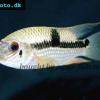 Acara
Acara  Yellow
Yellow  Patrick's
Patrick's  Blue
Blue  Green
Green 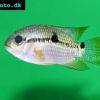 Acara
Acara  White
White  Compressed
Compressed 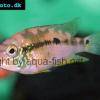 Pastel
Pastel  Midas
Midas  Red
Red  Bluemouth
Bluemouth  False
False 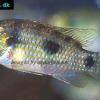 African
African  Agassiz's
Agassiz's  Banded
Banded 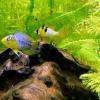 Yellow
Yellow  Cockatoo
Cockatoo  Blue
Blue  Blackstripe
Blackstripe  Highfin
Highfin  Redstripe
Redstripe  Threadfinned
Threadfinned  Macmaster’s
Macmaster’s 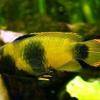 Panda
Panda  Norbert’s
Norbert’s 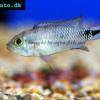 Blue
Blue  Thin-line
Thin-line  Three-striped
Three-striped  Viejita
Viejita 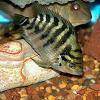 Flier
Flier  Archocentrus
Archocentrus  Convict
Convict  Seven
Seven  Spiny
Spiny  Oscar
Oscar  Sunshine
Sunshine  Chitande
Chitande  Firebird
Firebird  Midnight
Midnight  Lake
Lake  Sunshine
Sunshine  Aulonocara
Aulonocara  Nyasa
Nyasa 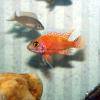 Ruby
Ruby  Grants
Grants  Aulonocranus
Aulonocranus  Chameleon
Chameleon  Benitochromis
Benitochromis  Orinoco
Orinoco  Yellow
Yellow 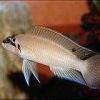 Brichard’s
Brichard’s  Guenther’s
Guenther’s  Southern
Southern  Cichla
Cichla 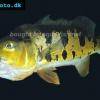 Peacock
Peacock  Chiseltooth
Chiseltooth  Bolivian
Bolivian  Red
Red  Many-pointed
Many-pointed  Jack
Jack  Red
Red  Three
Three 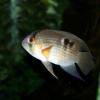 Keyhole
Keyhole  Azureus
Azureus  Red
Red  Jackson’s
Jackson’s  Crenicichla
Crenicichla  Honduran
Honduran  Blue-eye
Blue-eye  Afra
Afra 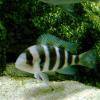 Frontosa
Frontosa  Slender
Slender  Malawi
Malawi  Chequerboard
Chequerboard  Checkerboard
Checkerboard  Malawi
Malawi  Ectodus
Ectodus  Tanganyika
Tanganyika  Canara
Canara  Green
Green  Rostratus
Rostratus  Pearl
Pearl 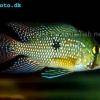 Geophagus
Geophagus  Yellowhump
Yellowhump  Suriname
Suriname  Redhump
Redhump  Red
Red  Dority’s
Dority’s  Argentine
Argentine 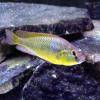 Burton’s
Burton’s  Victoria
Victoria 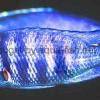 Haplochromis
Haplochromis  Jewel
Jewel  Banded
Banded 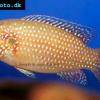 Lifalili
Lifalili  Lowland
Lowland  Texas
Texas  Pantano
Pantano  Severum
Severum  Banded
Banded 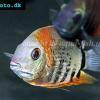 Severum
Severum  Rainbow
Rainbow  Parrot
Parrot  Chocolate
Chocolate  Brown
Brown  Marlieri
Marlieri  Golden
Golden  Striped
Striped  Masked
Masked 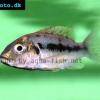 Konye
Konye  Blue
Blue  Trewavas
Trewavas  Electric
Electric  Dwarf
Dwarf  Redbreast
Redbreast  Lamprologus
Lamprologus  Gold
Gold 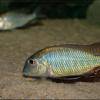 Greenface
Greenface 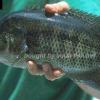 Mayan
Mayan  Aurora
Aurora  Blue
Blue  William’s
William’s 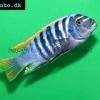 Zebra
Zebra  Malawi
Malawi  Blue
Blue 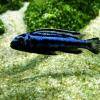 Blue
Blue  Mbuna
Mbuna  Parallel
Parallel  Purple
Purple  Flag
Flag  Bolivian
Bolivian  Ram
Ram  Basket
Basket 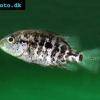 Haitian
Haitian  Zebra
Zebra  Striped
Striped  Neolamprologus
Neolamprologus  Brevis
Brevis  Fairy
Fairy 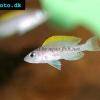 Neolamprologus
Neolamprologus  Cylindricus
Cylindricus  Hecq’s
Hecq’s  Neolamprologus
Neolamprologus  Lemon
Lemon  Mustax
Mustax  Daffodil
Daffodil  Six-bar
Six-bar  Five-bar
Five-bar  Marbled
Marbled 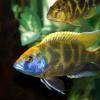 Giraffe
Giraffe  Sulphurhead
Sulphurhead  Wolf
Wolf  Jaguar
Jaguar  Blue
Blue  Marakeli
Marakeli  Madagascar
Madagascar  Pinstripe
Pinstripe  Pelmatochromis
Pelmatochromis  Kribensis
Kribensis 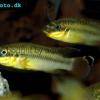 Striped
Striped  Red
Red  Deepwater
Deepwater  Fenestratus
Fenestratus  Nichols’
Nichols’  Southern
Southern  Bumble
Bumble  Demason’s
Demason’s  Slender
Slender  Red
Red  Mbuna
Mbuna  Malawi
Malawi  Kenyi
Kenyi  Powder
Powder  Altum
Altum  Angelfish
Angelfish  Angelfish
Angelfish 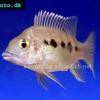 East
East  Juba
Juba  Earth
Earth 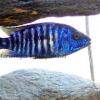 Electric
Electric  Azure
Azure 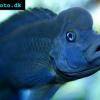 Lionhead
Lionhead  Discus
Discus  Blue
Blue  Red
Red  Zebra
Zebra  Brichard’s
Brichard’s  Blue
Blue  Firemouth
Firemouth  Zebra
Zebra  Yellow
Yellow  Blue
Blue  Dwarf
Dwarf  Blunthead
Blunthead 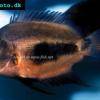 The
The  White
White  Twoband
Twoband  Fenestratus
Fenestratus  Window
Window  Tailbar
Tailbar  Black
Black  Redhead
Redhead 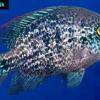 Oaxaca
Oaxaca  Xenotilapia
Xenotilapia